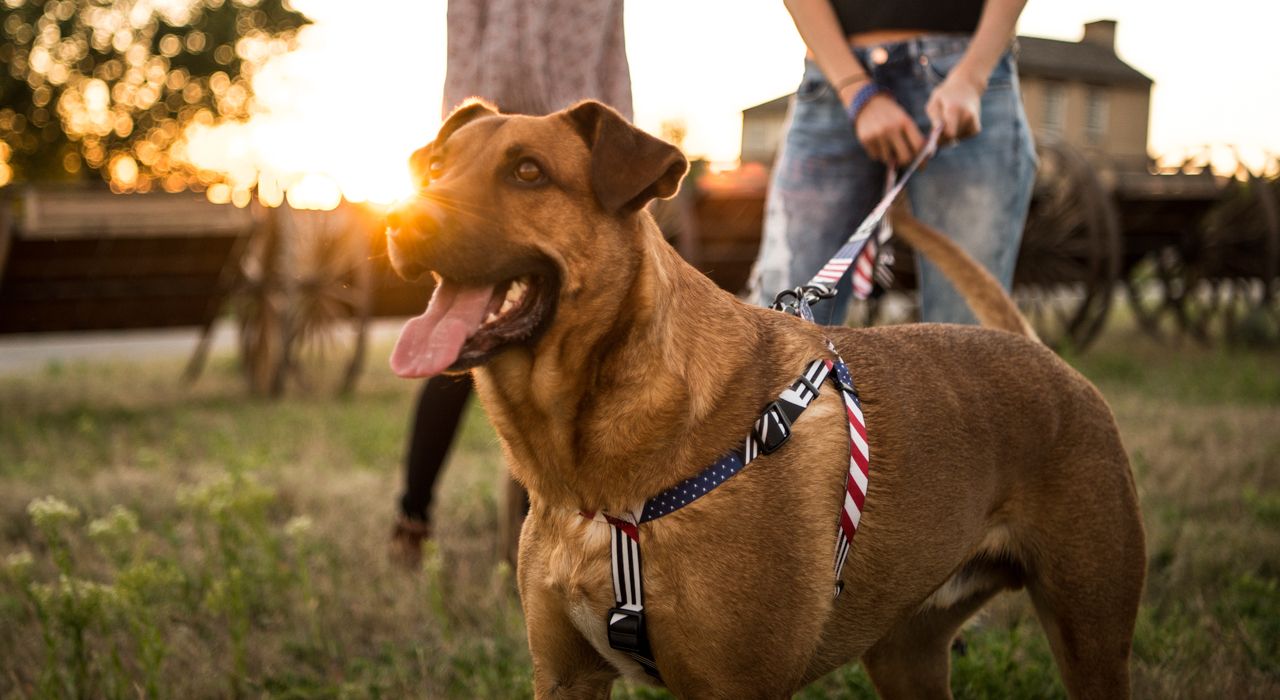
How Should a Dog Harness Fit for Comfort and Safety?
Share
How should a dog harness fit? Ensuring an appropriate fit for your dog's harness is crucial not just for comfort but also for safety. A well-fitted harness can prevent injuries, reduce pulling, and make walks enjoyable for both you and your furry friend. In this article, we will explore various aspects of harness fitting, helping you become a more informed and health-conscious pet owner.
Choosing the right size harness for your dog involves measuring their body correctly and considering the type of harness suitable for their breed and activity level. Many pet owners overlook this crucial step. This article will guide you through the process of fitting a dog harness, ensuring your canine companion remains comfortable and safe.

The Importance of a Proper Fit
When discussing how should a dog harness fit, understanding the reasons for a proper fit is essential. A harness that is too loose can allow your dog to escape and create dangerous situations, whereas a harness that is too tight can cause discomfort and even pain.
Many pet owners believe collars are enough for controlling their pets, but a properly fitted harness distributes pressure across the dog's body. This can be particularly beneficial for breeds prone to tracheal collapse. For more detailed information about collars and harnesses, check out this article on collars vs. harnesses.
How to Measure Your Dog for a Harness
To determine how should a dog harness fit, you first need to measure your dog accurately. Heres how:
- **Neck Circumference**: Measure the thickest part of your dogs neck.
- **Chest Girth**: Measure around the widest part of your dog's chest, just behind the front legs.
- **Length**: Measure from the base of the neck to the top of the tail.
Once you have these measurements, consult the sizing chart of the harness brand youre considering. The harness should fit snugly yet allow two fingers to slide between the harness and your dog's body. If you want instructions on measuring your dog for a harness, visit this measuring guide.

Types of Dog Harnesses
Before diving into fitting details, it's essential to know that there are various types of harnesses available, each designed to suit different needs:
- Back-Clip Harness: Ideal for calm dogs; it attaches at the back.
- Front-Clip Harness: Provides more control; the clip is located at the front.
- Vest Harness: Provides more coverage; excellent for small breeds.
- No-Pull Harness: Prevents pulling by redirecting the dogs movement.
The type of harness you select can impact the fit and comfort level of your dog.
Adjusting the Harness
Once youve selected the right harness, the next step is proper adjustment. Most harnesses come with adjustable straps. Here's how to adjust your dog's harness:
- Ensure the girth strap is snug but not too tight.
- Adjust the neck strap to allow room for your dog's movement.
- Test the fit by pulling gently on the harness; it should not shift excessively.
Remember that dogs can grow or lose weight over time, so periodically recheck the fit of the harness.
Signs of an Incorrect Fit
Being vigilant about signs of an improper fit is crucial. Common indicators that a harness does not fit well include:
- Chafing and Rubbing: Look for signs of irritation or redness on your dog's skin.
- Difficulty Breathing: If your dog seems to be struggling to breathe, the harness may be too tight.
- Escaping the Harness: If your dog can easily slip out, consider a size down or a different design.
For more information on adjusting harnesses based on your dog's behavior, check out this article on putting on a dog harness.
Benefits of Using a Properly Fitted Harness
Understanding the significance of a well-fitted harness cannot be overstated. A right harness enhances safety during walks, offers more control, and decreases the risk of injury. For health-conscious pet owners, equipping their dogs with the correct harness can lead to healthier, happier walks.

Common Myths about Dog Harnesses
Many misconceptions surround the use of harnesses. Here are a few common myths debunked:
- Myth 1: A harness encourages pulling.
- Myth 2: All harnesses are created equal.
- Myth 3: Collars are just as effective as harnesses.
FAQs
1. How do I know if my dog's harness is too tight?
You can check if the harness is too tight by placing two fingers between the harness and your dog's body. If you cannot fit two fingers, it is too tight.
2. Can I use a harness for training my dog?
Yes, using a front-clip harness can assist during training by redirecting pulling behavior.
3. How often should I check the fit of my dog's harness?
It's advisable to check the fit of your dog's harness every few months, especially if they are still growing or changing in weight.
Conclusion
Understanding how should a dog harness fit is fundamental for the safety and comfort of your furry friend. By following the guidelines in this article, you can ensure that your dog's harness fits properly, thus enhancing their walking experience. Investing time in finding the right harness will not only improve your dog's well-being but also make your time together more enjoyable.
As an Amazon Associate, I earn from qualifying purchases.
